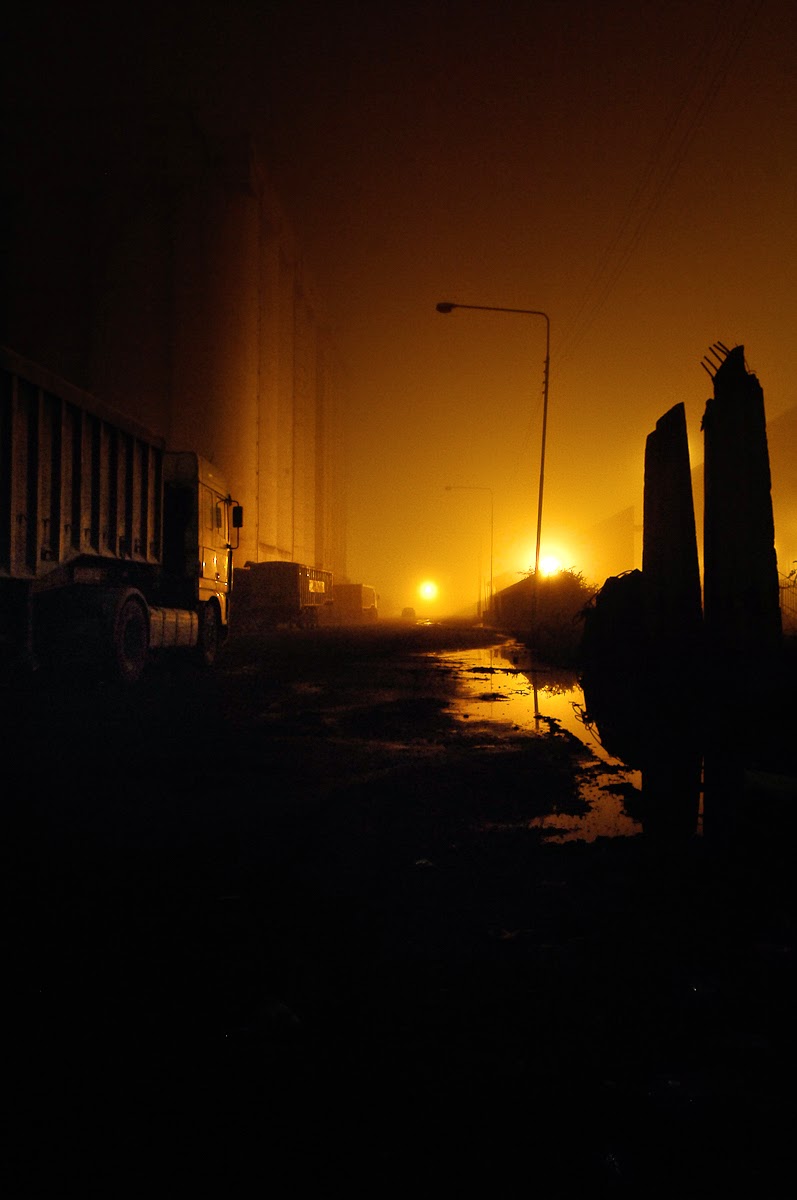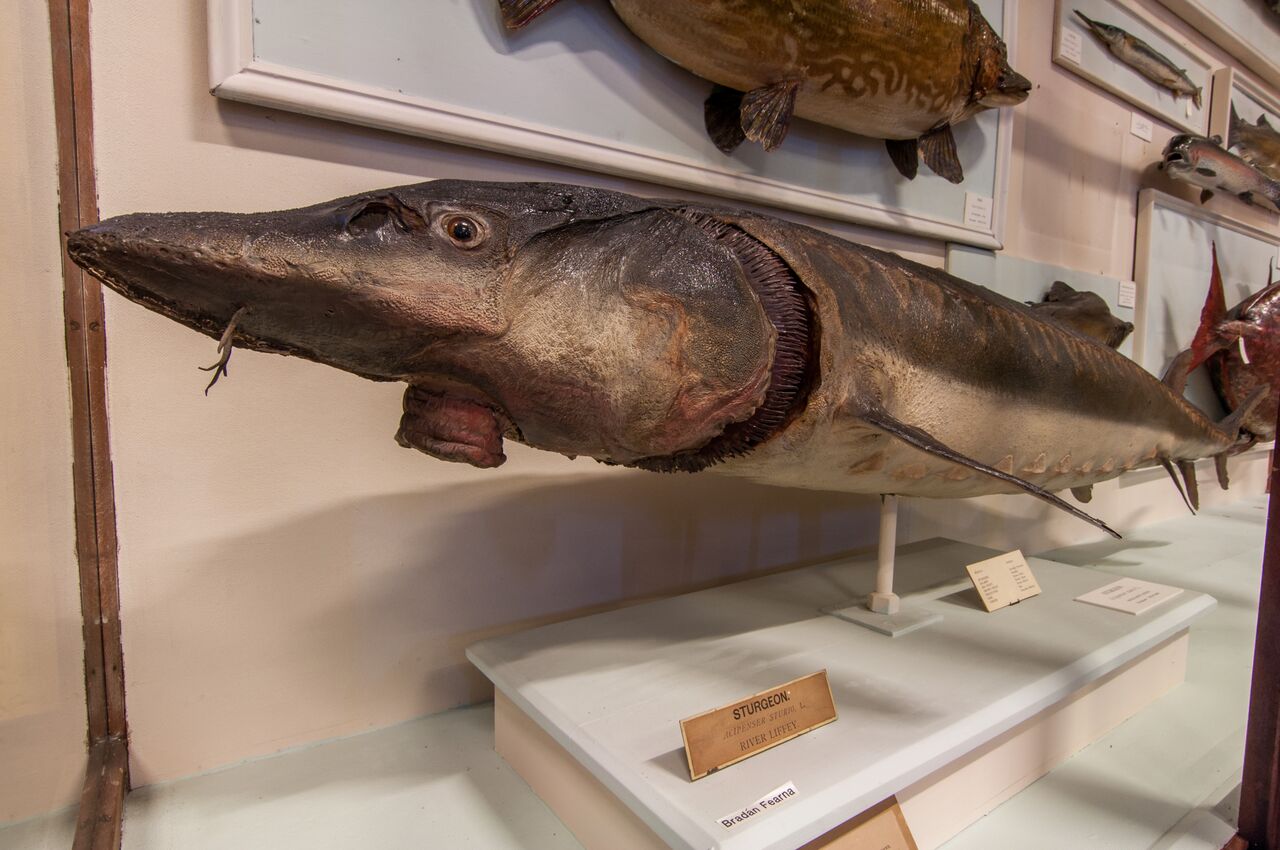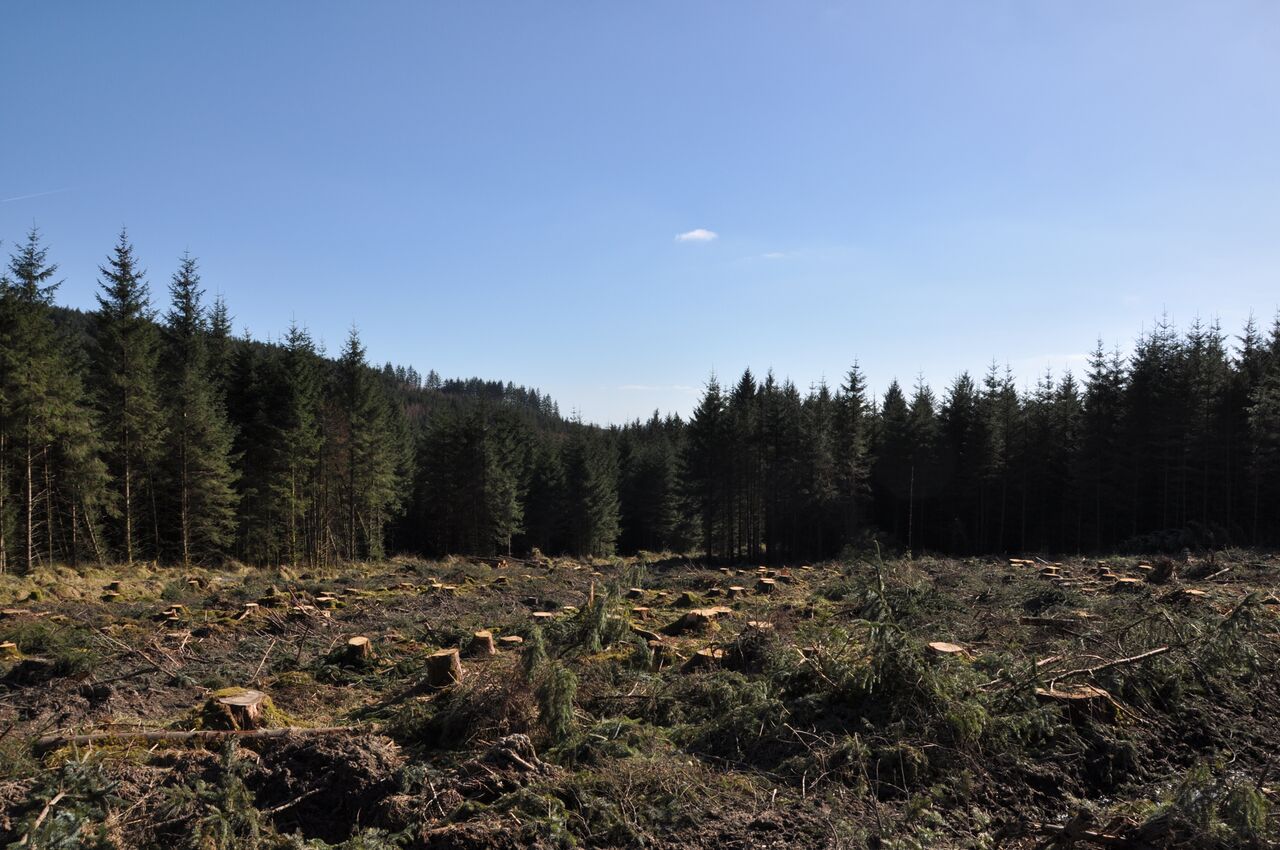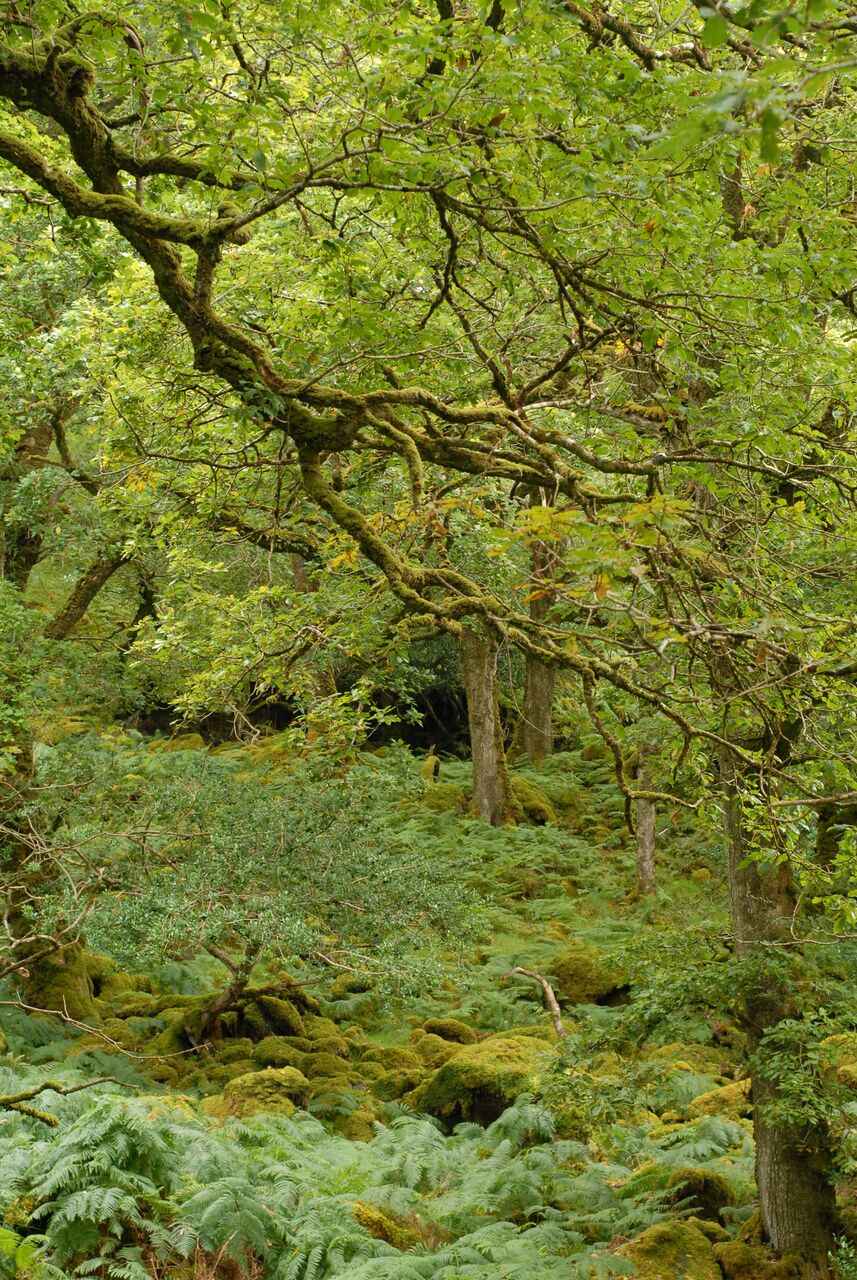‘Blade Runner 2049’ is a sci-fi follow up to the 1982 cult classic starring Harrison Ford and Sean Young. Our future hero is Ryan Gosling who navigates a lonely, desolate world amid general dystopian bleakness. The viewer is told that by 2049 all ecosystems have collapsed, leaving a sterile planet, allowing humans to survive only due to our air and water purifying technology. Food is the produce of industrial laboratories and citizens eek out their pointless existences huddled in soulless (and loveless) cities. It’s not pretty, and 2049 is only 30 years off – eek!
 Although evidently a work of fiction, the idea that we stand on an ecological precipice is very much the stuff of daily news. Two studies in particular, one on the decline of insect populations in Germany, the other on the disappearance of farmland birds in France, really let the headline writers out of the traps.
Although evidently a work of fiction, the idea that we stand on an ecological precipice is very much the stuff of daily news. Two studies in particular, one on the decline of insect populations in Germany, the other on the disappearance of farmland birds in France, really let the headline writers out of the traps.
Scientists warn of ‘ecological Armageddon’ after study shows flying insect numbers plummeting by 75% warned the London Independent; Europe faces ‘biodiversity oblivion’ after collapse in French birds howled the Guardian, which went on to say that “intensive farming and pesticides could turn Europe’s farmland into a desert that ultimately imperils all humans”.
Environmentalists lap this up – it bolsters what we’ve been crying about for years (and decades in some cases). Maybe, now that we’re all about to die a horrible death, politicians and policy makers will finally take us seriously and do what’s necessary to avert calamity. But hold up a sec. How exactly does turning Europe’s farmland into a desert imperil all humans? Sure, flying insects pollinate crops – and I’ll miss apples and strawberries when their price rockets because pollination has to be done by people with feather dusters – but I’m not going to starve! Where are the facts behind these doomsday assertions? What does it even mean when an ecosystem collapses?
II
Surprisingly, the idea of ‘collapse’ is not nearly as well studied as you might imagine. The book of the same name, by polymath Jared Diamond, looked at the collapse of societies, or human civilisations, which generally features environmental change as one of a number of factors.
For instance, the collapse of the Viking settlements in Greenland was largely due to the inability of the farmers, with their cows and oats, to adapt to colder conditions – even thought the Inuit alongside them did just fine hunting and gathering.
The Maya civilisation of Central America may well have collapsed primarily due to environmental changes, but it did not mean that all the Maya people died out – many people of Maya descent live in Central American countries today.
We have our own example right here in Ireland – the Céide Field dairy farming community on the north coast of County Mayo made a living from the land up to about 5,000 years ago. Some believe that the collapse of their society was partly due to deforestation, which made the soil wetter, and promoted the spread of bog and the loss of nutrients. Yet farming in Ireland continued.
Instances where all life has been destroyed are rare if non-existent – the only example I can think of are the oceanic dead zones where so much farm and human waste has been dumped in the sea that bacterial action has sucked all oxygen from the water (none of these thankfully are anywhere near Ireland). Even deserts are not dead.
The International Union for the Conservation of Nature (IUCN) is the global body which monitors the health of Earth’s ecosystems and it is best known for its conservation assessments of individual species, which results in endangered species lists (or ‘red lists’ as they’re known). Its assessment of habitats – that is, the environments in which species live – is much less developed. It does however provide a useful definition to allow us to tell when a whole ecosystem has collapsed:
“An ecosystem is considered collapsed when it is virtually certain that it’s defining biotic [living]or abiotic [non-living] features are lost, and the characteristic native biota [i.e. the plants and animals] are no longer sustained. […] Collapse is a transformation of identity, a loss of defining features, and/or replacement by a different, novel ecosystem”.
As an example it shows how the Aral Sea in Central Asia, which was once the fourth largest inland water body in the world. Extraction of the water for agricultural irrigation meant that by the late 1980s most of the water had disappeared along with the community of plants and animals which once lived there. The Aral Sea today is not a dead zone, plants and animals continue to live there, but it is drastically different to what it was. It no longer supports the livelihoods which once sustained themselves by fishing, and salt intrusion from deep in the soil means that it may never recover.
Another example of ecosystem collapse is the Grand Banks cod fishery off the coast of Newfoundland. There, despite the ending of all fishing in the 1990s, the cod have not returned. In both cases, the loss of the ecosystem led to devastating social and environmental disruption. Yet nobody died and life in these areas goes on (of the human and non-human kind), and a new normal has settled in. Sad tales to be sure, but it’s a far cry from Hollywood disaster zone.
III
To get a glimpse of what it’s like to live in a collapsed ecosystem just take a trip to Iceland. When the first human settlers arrived there around the end of the first millennium AD they found a country that was up to 40% covered in forest. The rest of Iceland was covered in a near-sterile ice sheet or bare volcanic rock.
Like farming communities everywhere they set about felling the trees to plant crops or graze animals. The forests were a source of fuel and fodder for people and their animals but nevertheless deforestation continued right up to the 1950s. The result was massive soil erosion which prohibits the growth of any vegetation, as well as destructive sand storms as the fierce sub-Artic wind whips up the loose soil.
Today Iceland has virtually no forest left and establishing new woodland has proven to be extremely difficult. Much of Iceland is now technically a desert. Nevertheless, its small population enjoys a high standard of living and a consumer culture that is available to anyone else in the world on a middle-class income.
It is currently enjoying a tourist boom, with more visitors perhaps than it can cope with, and these people are drawn primarily for its dramatic landscapes. Modern technology means that no one goes hungry or wants for freshwater. They have abundant geothermal energy which is even being harnessed to grow peppers and tomatoes in polytunnels outside Reykjavik. They also have a renowned fishing industry which, due to good management, is still productive.
Visitors to Iceland scarcely notice that they are traversing a collapsed ecosystem but are nevertheless enthralled by its beauty and grandeur. So the question is posed: is it possible for the natural world to collapse all around us and, rather than provoking death and destruction, for it be met with a shrug? Maybe there will be no point of reckoning, no fulcrum upon which the attention of politicians will swing towards policies which are genuinely geared towards restoring the living world. Maybe it will happen and we’ll be too busy on our screens to pay any attention.
IV
Take a look at the environmental history of Ireland. It is believed that when people first arrived on our island the land was cloaked with extensive oak forests. In between there were wetlands (bogs, swamps and the like), lakes and rivers, and maybe the very tops of some of the higher mountains had no trees. The oceans teemed with life.

Now-extinct Sturgeon in the Natural History Museum.
5,000 years ago the first farming communities emerged and, just like in Iceland, this was associated with deforestation. Some species went extinct in this time, such as the brown bear, lynx and wild cat, and this is bound to have had an effect on the forests that remained. Up to 500 or 600 years ago, most of these ecosystems on land and sea were largely intact. Forest cover had reduced dramatically (one reference gives forest cover as about one eighth of the land cover in 1600) but our rivers ran free, great wetlands held flocks of cranes and wolves were widespread.
By 1800 the forest ecosystem had collapsed completely, at this stage only tiny fragments remained while key forest animals like the wild boar had vanished (wild boar increase woodland biodiversity and help in the germination of tree seedlings by rooting in the soil). The wolf was also extinct. Most people appreciate that food webs are impacted when only one species is taken out, though oftentimes the exact impact can be hard to discern. Not the wolf – we now know just how important the presence of a top predator is in keeping all the plants and animals in check, not only deer but the smaller predators like foxes.
By the end of the 1800’s not only the wolf but all the large birds of prey (two species of eagle, Red Kite, Buzzard, Osprey, Goshawk and Marsh Harrier) were also gone. By 1920 the extinction tally was added to further. Even the North Atlantic Right Whale – hunted off the coast of Donegal in the early 1900s – had disappeared completely.
All the same, the rivers were still bursting with fish and pollution was virtually unheard off. Vast oyster beds around the coast had been dredged away but the sea’s bounty remained immeasurable. There had been lots of turf-cutting for domestic fuel but there were still vast areas of intact bog and fen, and floodplains which attracted enormous numbers of birds – particularly those which laid their eggs on the ground, like Corncrakes, Lapwings, Curlews and Redshanks. In winter these areas hosted great flocks of wintering geese, ducks and swans. The air would have constantly been alive with their calls. Since that time let’s take a look at what has happened:
- The area of midlands raised bog has been reduced to 0.63% of its original extent, primarily from industrial-scale open pit mining. There are no untouched bogs remaining and the best example (Clara Bog in Offaly) has a road slicing through it.

Industrial scale peat extraction is a feature of many midland counties.
- The Office of Public Works have deepened and straightened 11,500km of river channel under the Arterial Drainage Act of 1942, cutting rivers off from their natural flood plains. Impassable dams on the Shannon, Erne, Liffey and Lee (among others) mean migratory fish cannot access their traditional spawning grounds. Salmon and Eel populations have collapsed to the point where both species are threatened with extinction. There are virtually no Salmon in the River Shannon above the Ardnacrusha dam today.
- Approximately half of water bodies (lakes, rivers, estuaries) are polluted while the number of ‘pristine’ water sites has dwindled from over 500 in the 1980s to only 21 today. There is no river left in Ireland healthy enough to allow Freshwater Pearl Mussels to breed in.

Drainage has drastically altered many Irish rivers, leading to flooding.
- Of the great peat bogs which stretch across the West of Ireland and other mountain areas, only 28% are ‘worthy of conservation’ – as the rest has been destroyed beyond salvation by conifer plantations and drainage, while fires, turf-cutting, wind farms etc. have left none of our upland habitats in ‘good condition’ according to the National Parks and Wildlife Service.

Conifer plantation smother landscapes, communities and wildlife.
- Fish are no longer present in coastal waters in any abundance – traditional fisheries for Herring, Mackerel, Cod, Whiting, Bass, Sole, Plaice, Turbot and other flatfish have all but disappeared. ‘Fishing’ today in these areas is not for fish but crustaceans (prawns, crabs and lobsters) while the real fishing is done by enormous factory boats far out to sea. Bottom trawling and dredging – which obliterate seafloor communities of plants and animals – is carried out practically everywhere, and sometimes more than once a year. It not only results in habitat loss but overfishing of non-target species and colossal waste (up to 90% of the contents of a prawn trawl can be dumped overboard).
- Modern farming relies increasingly on inputs of chemical sprays or reseeding, which eradicates wild plants and animals with brutal efficiency. The next time you look at a farmer’s field see how many flowers or flying insects you can count.
- 62% of sharks and rays occurring in Irish waters are threatened with extinction. Some, such as the angel shark, flapper skate and porbeagle shark, are critically endangered.

Bumble bees are vital pollinators of wild plants as well as fruit crops.
- Conservation assessments have been carried out for mammals, birds, moths, plants, mayflies, dragonflies, amphibians, reptiles, freshwater fish, butterflies, water beetles, freshwater molluscs, sharks, and bees. On average a third of all of these species are either ‘threatened’ or ‘near threatened’ with extinction.
- There is documented evidence that about 115 species of plant and animal have gone extinct from Ireland since the arrival of humans. Many more have gone from common and widespread to the verge of extinction in the space of my lifetime, such as the curlew, the nightjar and the purple sea urchin (I’m 44).
In the words of the IUCN all of our ecosystems – on land and at sea – have suffered a transformation of identity, a loss of defining features and a replacement by a different/novel ecosystem. They have all collapsed. Yet this has largely gone unnoticed, unremarked upon and even unappreciated by many environmentalists and ecologists in Ireland.
IV
Today, unlike the Greenland Vikings or the Maya, we draw on resources from across the entire planet. My ice cream might contain palm oil grown on land which once had rich Indonesian rain forest, the steak I order in my local restaurant may come from a cow raised on deforested land in Brazil or my smoked salmon may be indirectly resulting in overfishing of a fish species I’ve never heard of before, in a lawless part of the high seas.
Many Irish cows, destined to be eaten in China, have been raised by eating not only locally grown grass, but soya products from South America. Much of the time it’s virtually impossible to know what the impact of our purchasing decisions has been. Does this mean that while we may live happy, cosseted lives in our own degraded environment, we are really just exporting ecosystem collapse to the farthest reaches of the planet? Are we living on borrowed time?
Nearly 10 years ago an international team of scientists tried to answer this question and the answer was: probably. Their paper, Planetary Boundaries: Exploring the Safe Operating Space for Humanity, published in the journal Ecology and Society in 2009, identified nine planetary boundaries within which ‘humanity can operate safely’. These included climate change, ocean acidification, ozone depletion, use of freshwater, biodiversity loss and land-system change.
For three of these, climate change, biodiversity loss and disruption of the nitrogen cycle, we have already broken through the limits of what is sustainable. In 2012 a study led by Anthony Barnosky of the University of California, Berkeley was published in the journal Nature. It asked whether humans are forcing a planetary-scale transition “with the potential to transform Earth rapidly and irreversibly into a state unknown in human experience”. It concluded that the plausibility of such an eventuality “seems high”. One of the authors told the New York Times that “the situation scares the hell out me”.
In Ireland these arguments seem abstract despite the fact that the natural world has collapsed all around us. We rely entirely on purification technology for drinkable water as the water from rivers and lakes would otherwise make us sick. Thousands of people have been put out of work around our coasts after fish populations vanished, and continue to disappear (there is currently talk that traditional eel fishermen are in line for compensation in return for handing in their nets; the volume of exported lobsters fell by 20% in 2017 etc.).
Extinction brings with it the irreversible loss of heritage, tradition and folklore. Across Ireland farming of any kind is increasingly a loss-making enterprise – according to Teagasc sheep, beef and tillage sectors rely entirely on state aid for an income. Even the much-touted dairy sector is heavily dependent upon subsidies which perversely promote pollution, habitat loss and further extinction.
We have a forestry sector which is dominated by non-native conifer monocultures to produce cheap furniture and costs Irish taxpayers €100 million per year. Meanwhile climate change, along with ecological collapse, has left farmers and foresters more vulnerable than ever to extreme weather events, disease and other influences beyond their control. These changes will be calamitous for some, but for most it will unfold with a shrug.
V
Our lives are not quite as devoid of colour as the inhabitants of the imaginary city in Blade Runner but they are increasingly dependent upon technology and more divorced from nature. Few people today know the taste of wild salmon or hear the sound of the curlew and we are all the poorer for it.
To bring nature back we need to change the story. We need to start talking more about the opportunities and not only about the threats. What if we planted enormous forests of native trees in which there could be food production, recreation and valuable timber? What if we could rebuild the health of the sea so that a net full of fresh Herring or Oysters or Turbot could be sold at the pier from a small, low-impact fishing boat? What if we restored our uplands and rivers so that anglers could once again catch monster Salmon; or if we had clean water to drink, and farmers could pick up a pearl (from a Freshwater Pearl Mussel) from the bottom of a sparkling river? What if we transformed the open cast peat mines across the midlands into a wilderness with bears, cranes, wolves and flocks of wild birds which darken the sky?

Killarney National Park – under threat from invasive species and grazing by animals.
These are experiences which would enrich our country not only for visitors but for the people who live in these areas. We have a long way to go before life itself is snuffed out and Ireland still has amazing wildlife spectacles. But these are getting fewer in number all the time. Dramatic changes are upon us and uncertainty lies ahead. We can shrug our shoulders and allow ourselves to be carried away, or we can be bold and create a future for our children which is not merely habitable, but rich and rewarding.
Pádraic Fogarty is an ecologist and campaign officer with the Irish Wildlife Trust. His book, Whittled Away – Ireland’s Vanishing Nature was published in 2017 by Collins Press. He tweets under the handle @whittledaway




